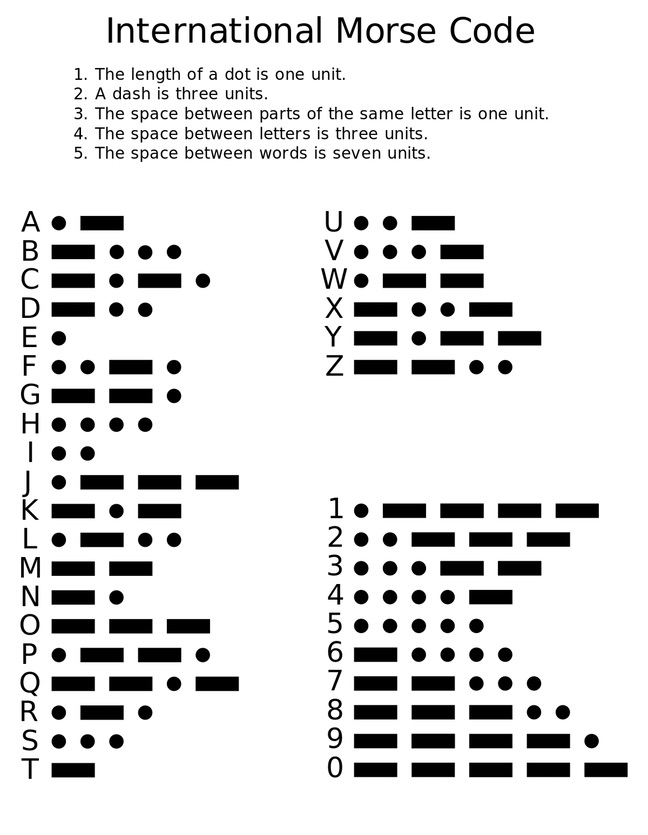Morse code is a series of short sounds, long sounds, and pauses, representing each letter of the alphabet and each number, 0-9.
Invented by Samuel Morse to enable communication via the telegraph he invented, the code has also been used in radio communication.
A through Z in Morse Code

Learning Morse Code was a requirement for U.S. military pilots during WWII. It was unpopular among them, because it was difficult to learn, time consuming, and virtually never used by a pilot while flying. The students often thought this training was pointless, but the Army Air Force Training Command thought differently.
“Pilot trainees, in particular, were unhappy in having to take radio code instruction. It was admittedly a dull subject, requiring concentration and repetition. Student motivation was weakened by the fact that flyers returned from combat generally declared that overseas they had little use for code. Headquarters, AAF, however, repeatedly directed that code be taught, and all preflight students, except those who demonstrated proficiency, had to attend one hour of code daily. By 1944 both sending and receiving of code, by aural and visual means, were taught. The proficiency required was six words per minute.” (The Army Air Forces in World War II: VI, Men in Planes.)
Tom Cartmell was required to learn Morse Code, and used it in the closing of some of his letters.
